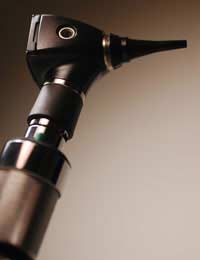How The Ear Works

The ear is very delicate and extremely clever instrument comprising of a complex design of structures. The ear allows us to hear sounds and to balance due to the nature of the anatomy.
Anatomy of the Ear
The ear is divided into three main parts: the outer, middle and inner ear. Each section has its own function and components though if one section becomes damaged, this can affect the remaining two parts.The Outer Ear
Within the outer ear there is the pinna and the external auditory canal.The pinna is made up of cartilage, which gives the ear it's shape and form and it's purpose is to pick-up sound waves and direct them into the ear canal, which then increases the volume of the sound wave and sends it to the middle ear. The external auditory ear canal contains wax, which helps to prevent foreign bodies and infections from entering the deeper ear structures.The Middle Ear
The middle ear comprises of the ear drum, the bony areas known as the stapes, the malleous and the incus, which are collectively known as the ossicles, the middle ear cavity or space and the Eustachian tube. The ear drum detects the sound waves and via a series of vibrations transmits the frequency and wave form to the middle ear.The middle ear cavity serves as a space into which secretions can collect and be eliminated from the ear. It also acts as a pressurising chamber whereby pressures outside the ear, around the ear drum and inside the ear can be equalised.
The bony structures of the middle ear, or the ossicles, are the smallest bones found in the human body, and act as the connection system that amplifies and passes sound waves from the ear drum to the inner ear fluids.
The Eustachian tube connects the ear to the back of the nose and helps to both equalise pressures and help eliminate secretions.
The Inner Ear
The inner ear is made up of round window, the oval window, the cochlea and the semi-circular canals. The inner ear is more simply a complex maze of fluid filled chambers that convert the sounds into impulses that our brains can interpret.Both the round window and oval window are membranes that act as a barrier between the fluid of the inner ear and the air within the middle ear.The cochlea is the part of the ear that transmits sounds to our brains. It is very important and extremely delicate in anatomy and physiology.
The deepest part of the ear contains the semi-circular canals that help us to control and maintain our balance.
Along with these structures, the inner ear also contains tiny hairs that move with sound vibrations and help transmit signals to the nerves and the brain.
The ear is an intricate design of different structures that, when combined, compliment each other and create a very special and delicate instrument.Due to the fragile nature of the anatomy, it is easy to understand how it can become irreparably damaged and how we should learn to try and look after our ears to our best ability.
- The Impact of Flight on the Ears
- How the Inner Ear Helps You Walk Straight
- Ear Trauma: Causes and Effects
- What's the Point of Earwax?
- How Your Genes Shape Your Ear Lobes
- How Well Do You Know Your Ears?
- What Has Sea Sickness Got to Do With the Ear?
- Living with a Cochlear Implant
- Will Gene Therapy Reverse Deafness?
- Dangers of Workplace Noise
- Can Earphones Damage Your Hearing?
- The Ears and Culture
- Ear Piercing And Health
- How to Protect Your Ears
- Looking After Your Ears


Re: Types of Ear Surgery
My child is born with deaf. So what should i do. Which treatment should i take to my child
Re: How Your Genes Shape Your Ear Lobes
My 2 month old has one free earlobe and his other ear has a half attached earlobe why? Should I be concerned?
Re: I Feel Dizzy and My Ear Itches: What Does it Mean?
I have noticed my ears are producing more sticky staff, itching and in the middle of last year I…
Re: Can Ear Wax Be Removed by Vacuum?
Vacuuming caused a 30% hearing loss. Don't allow it. Find a dr or audiologist who avoids it.
Re: Cysts and Tumours in the Ear
I had a pollock in my ear. can they regrow ?
Re: Grommets and Your Ear
@Ella - I'm afraid we can't give direct medical advice. The best option you have is to visit your GP and hope he/she will be able to help…
Re: Grommets and Your Ear
I had grommets when I was 2 and 5, a few weeks ago I found out I have scarring and 1 of my grommets are still in my ear meaning I had it in…
Re: Can Ear Wax Be Removed by Vacuum?
I had an ear wax removal procedure done at the Loma Linda, Ca Va facility. When the tech was vacuuming out the wax in my…
Re: Cysts and Tumours in the Ear
@CarrolA - I have no knowledge of your condition or what it might be. But if you want a quicker appointment, and peace of mind,…
Re: Cysts and Tumours in the Ear
I woke up one morning about five weeks ago with a feeling that my ear was blocked. A strange additional symptom is that every word…